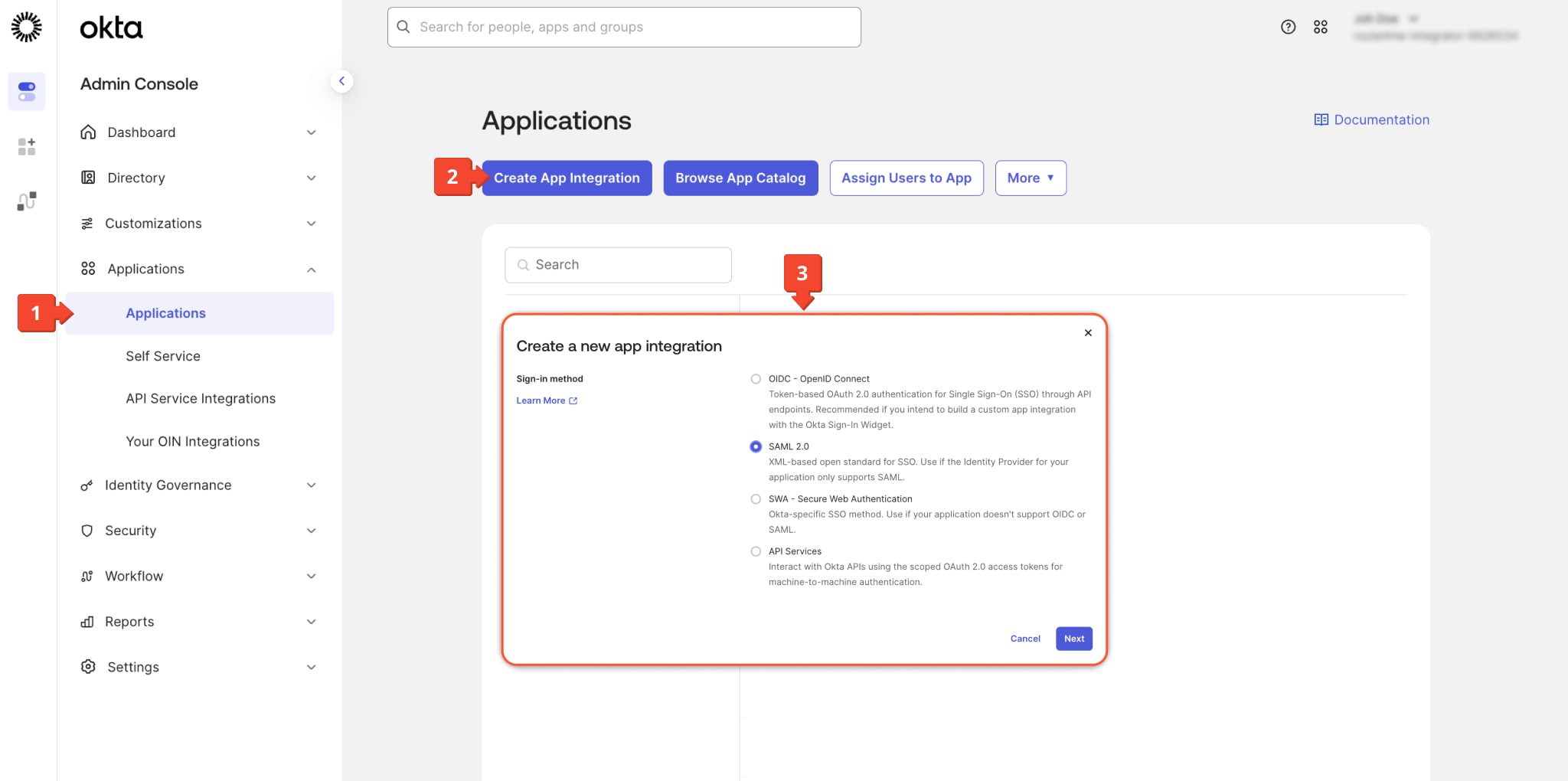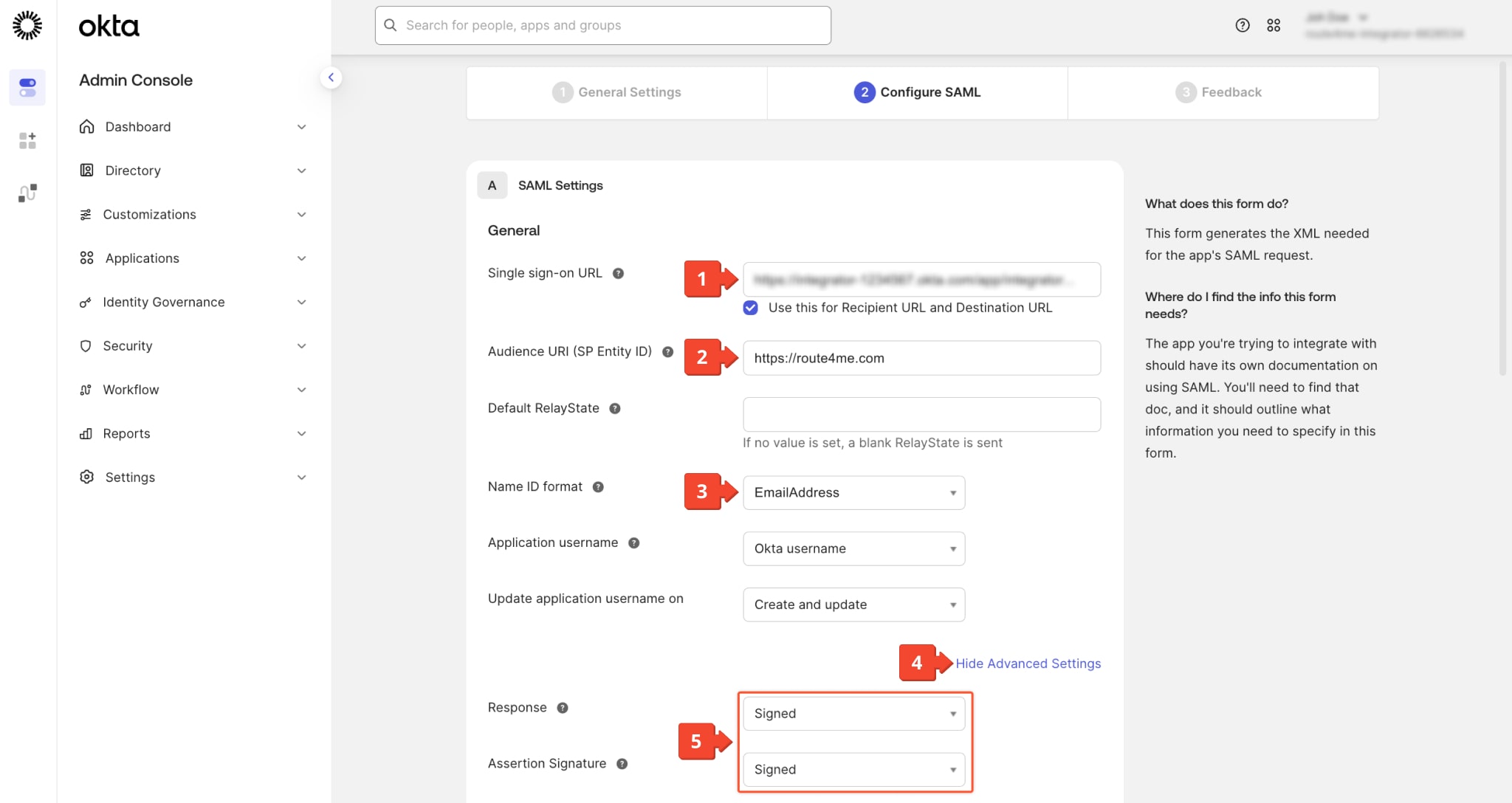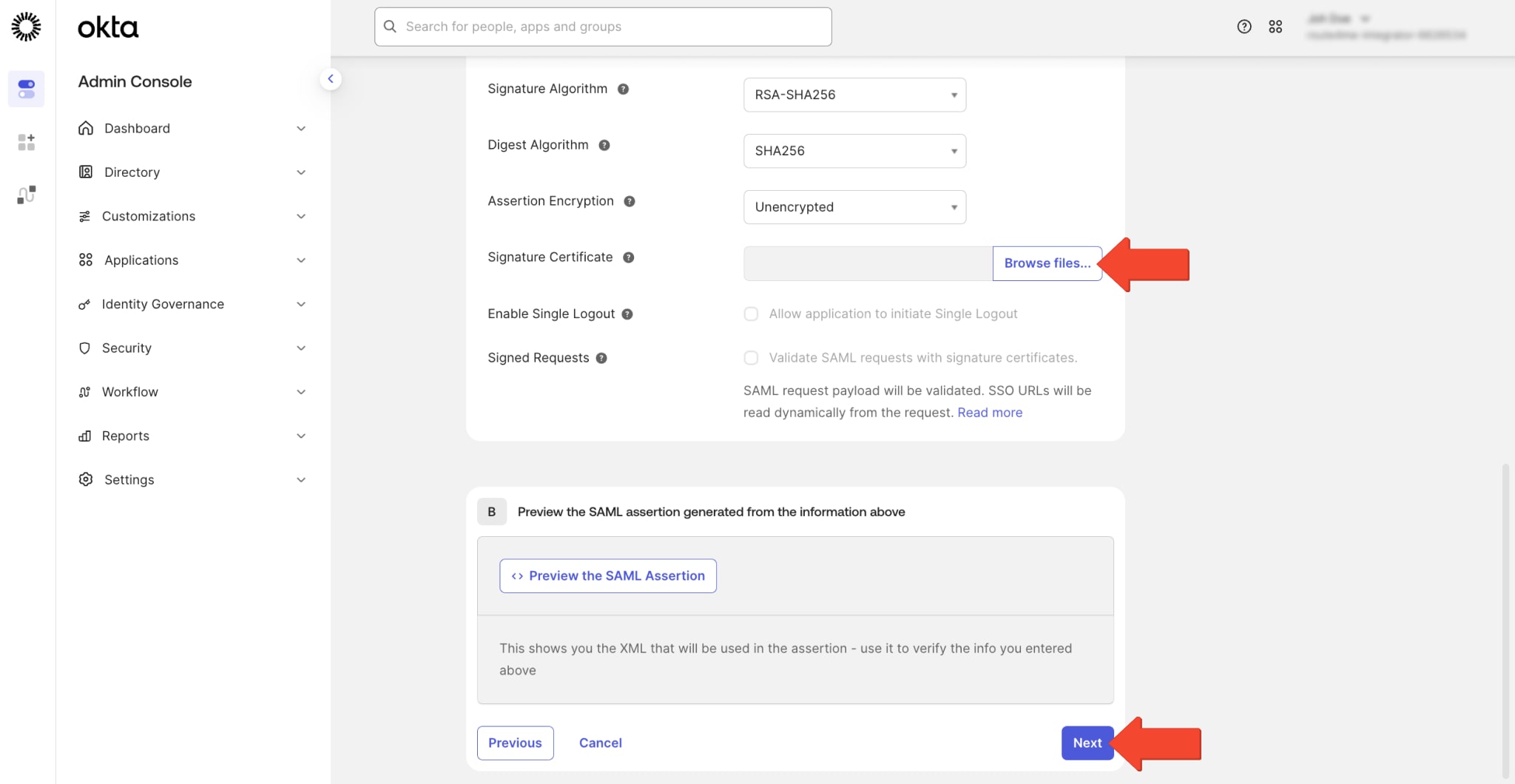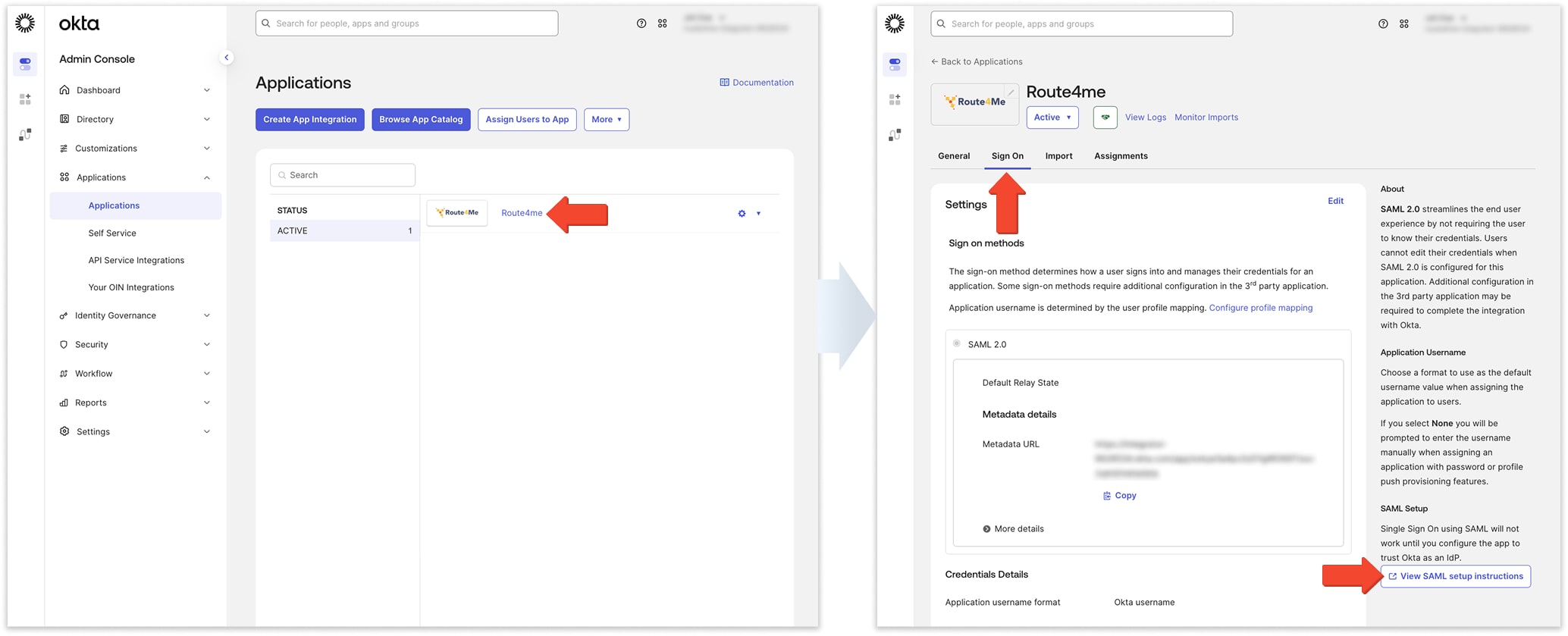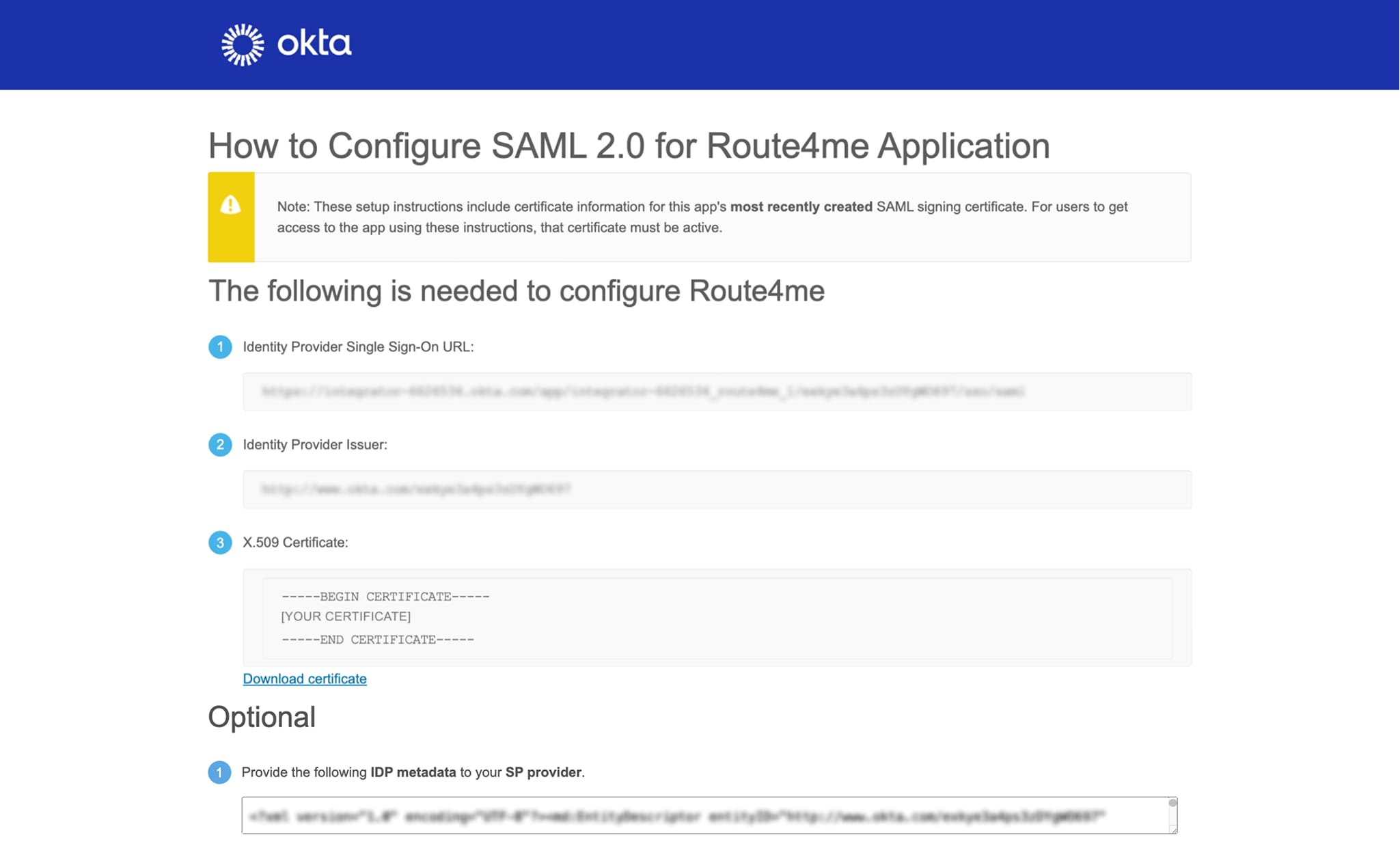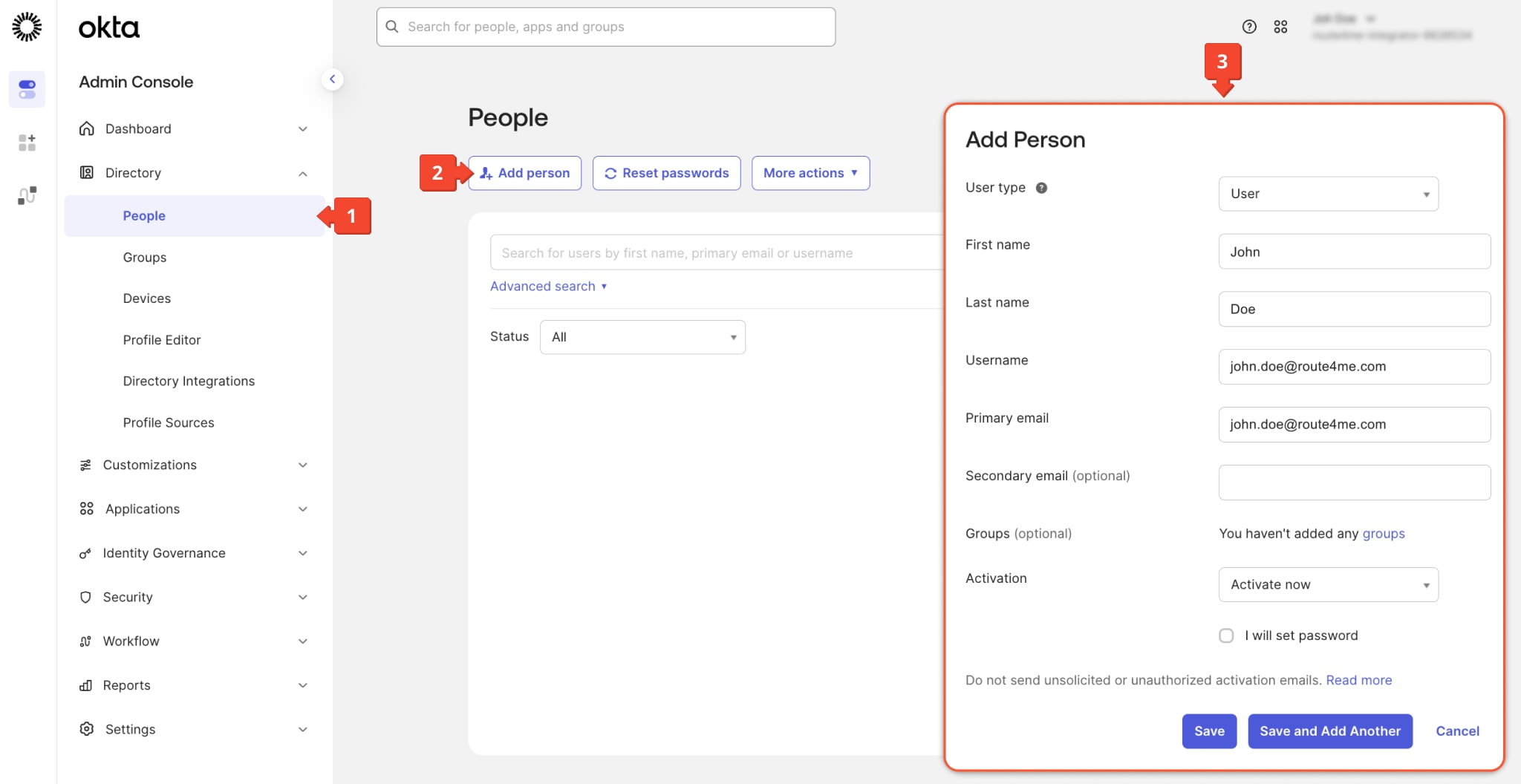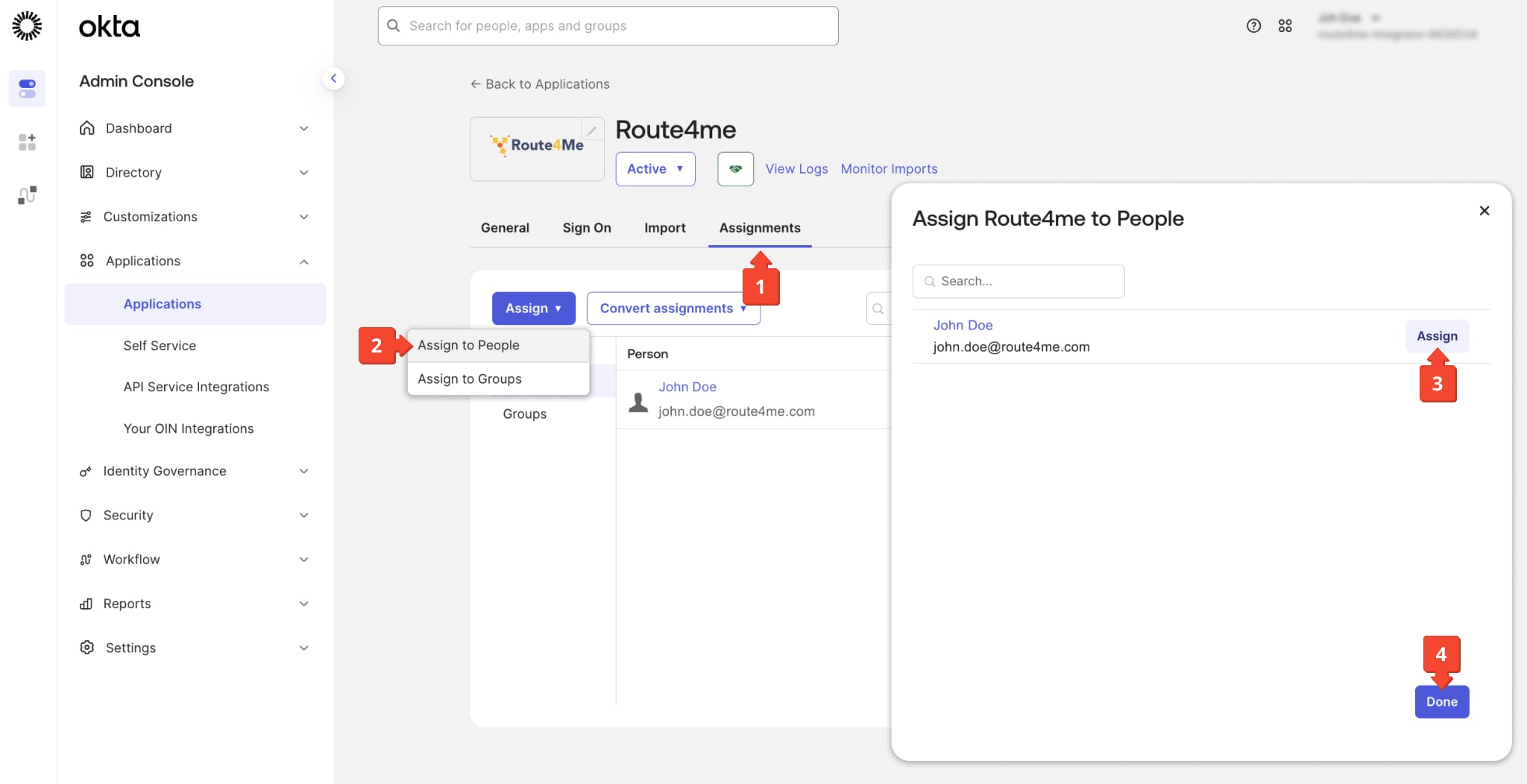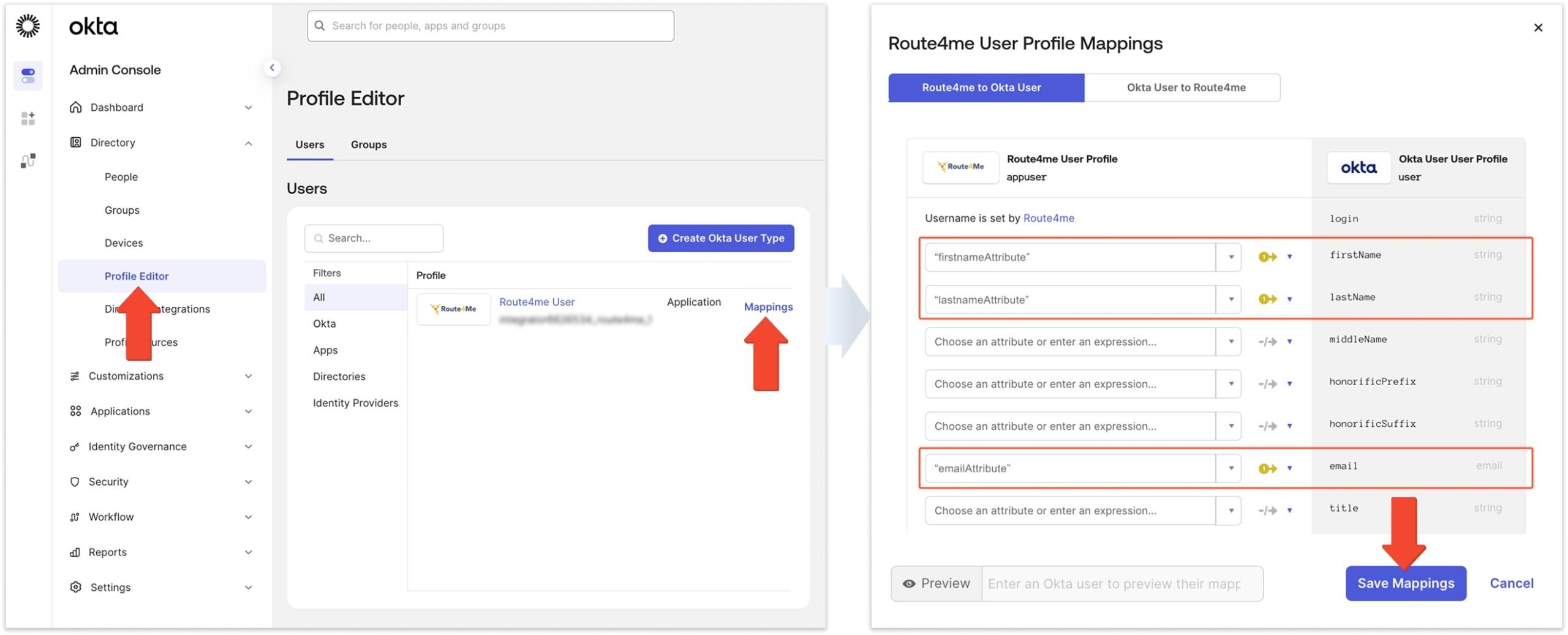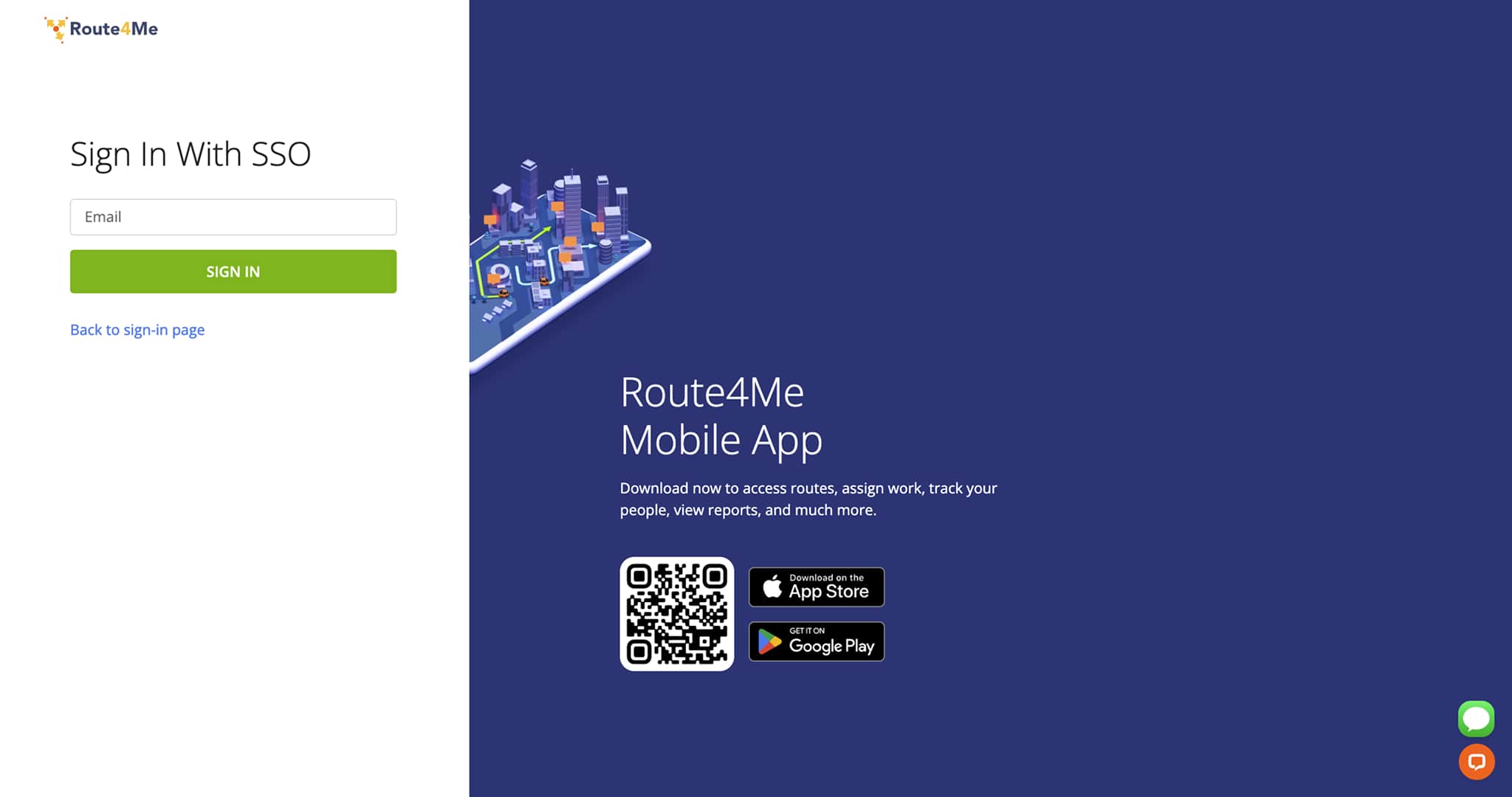Okta SAML – Route4Me SAML SSO With Okta Integration
Route4Me’s SAML SSO Integration enables you to log into Service Provider websites, such as Route4Me, with your existing user identity from your own website or app, such as Okta. Creating an app integration between Route4Me and Okta is a straightforward process. In this guide, you can learn how to create an Okta SAML integration with Route4Me, choose your preferred settings, add an optional app logo, and more. Additionally, you can learn how to set your preferred SSO (Single Sign-On) settings and share SAML Metadata details. 
Table of Contents
Add New SAML Application In Okta Developer Admin Console
To create a Route4Me SAML integration with Okta, sign in to your Okta developer account as a user with administrative privileges, open the Admin Console, and follow the steps below:
- Go to “Applications” > “Applications“.
- Click “Create App Integration“.
- Select “SAML 2.0″ and click “Next“.
In the “General Settings” tab, enter the name for your integration, optionally upload a logo, and click “Next“.
Once you’ve set the general integration settings, you can configure the SAML settings.
- In the “Single sign-on URL” field, enter the Assertion Consumer Service (ACS) URL from your Service Provider Configuration.
- In the “Audience URI (SP Entity ID)” field, enter the entity_id (https://route4me.com).
- In the “Name ID format” field, select “EmailAddress“.
- Click “Show Advanced Settings“.
- In the “Response” and “Assertion Signature” fields, select “Signed“.
Scroll down to see more settings and proceed with the SAML configuration.
In the “Signature Certificate” field, click “Browse files...” and select your SP Configuration certificate. When you’ve set up your SAML Application settings, scroll to the bottom, click “Next“, and proceed to finalize creating your Okta Application.
Set Up Integration – Link Okta Application To Route4Me
Once you’ve created the Application, you can connect it to Route4Me. Go to “Applications” > “Applications” where you’ll see your new Application. Click it, then go to the “Sing On” tab. On the bottom-right, click the “View SAML setup instructions” button.
The instructions page contains your Identity Provider SSO URL, Issuer, and X.509 Certificate. Use them to set up your Route4Me SAML Integration and link your Okta Application to Route4Me.
Create New User – Set Up Team Member Profiles
After you’ve set up your SAML SSO Integration, you can start adding new team members. To do so, follow these steps:
- Go to “Directory” > “People” in the Okta Developer Admin Console.
- Click the “Add person” button.
- Fill out the “Add Person” form with your team member’s details and click “Save“.
When you’re done adding Users, proceed by assigning your Okta Application to them, as described in the next section.
Assign Okta Application To Users For SAML SSO Integration
When you’re done setting up your Okta Application and adding users, you can assign the application to your team members. Go to “Applications” > “Applications“, open the Application, and follow the steps below:
- Go to the “Assignments” tab.
- Click “Assign” and select “Assign to People” who should have access.
- Click the “Assign” button next to users to assign the Application to them.
- Click “Done” to save your assignment settings.
Once you’ve assigned the Application to your preferred Users, they’ll be able to authenticate via SAML SSO.
User Profile Mapping – Per-User Profile Settings And Data Mapping
To ensure correct User data mapping for your Okta SAML SSO integration, go to “Directory” > “Profile Editor“. Then, click “Mappings” next to your Okta Application’s User Type entry. On the right, under “Okta User User Profile“, you’ll see Okta’s internal User data values. Map them to the corresponding Route4Me values as follows:
- “firstnameAttribute” (Route4Me) > firstName (Okta)
- “lastnameAttribute” (Route4Me) > lastName (Okta)
- “emailAttribute” (Route4Me) > email (Okta)
Then, click “Save Mappings” to finalize.
Route4Me SAML Single Sign-On And Account Authentication
You can test your Okta SAML SSO by following the steps in the Route4Me SAML SSO Guide. With everything set up, your team members can authenticate with SSO using the email addresses associated with their profiles on your Okta account.
Last Updated:
